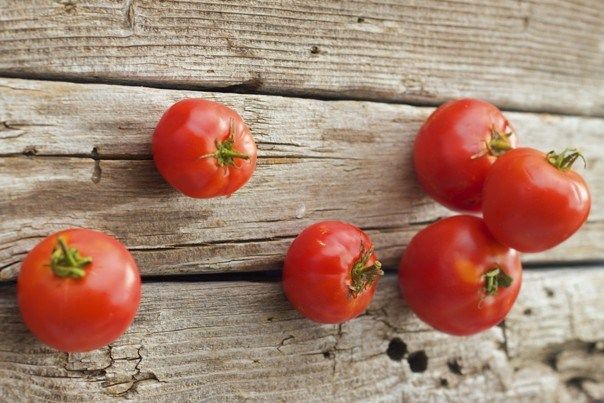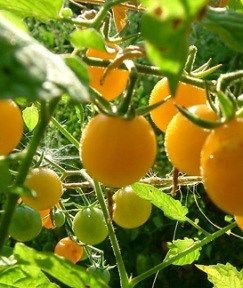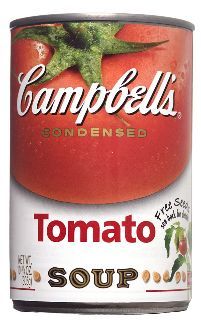


The tomato is the fruit of a creeping plant and in spite of what is usually supposed, its history does not begin in the Mediterranean area: the Italian pizzas only knew the tomato sauce after the fruit was imported from the New World. This food, used in countless recipes on all continents, is defined as a fruit in botanical terms. However, in the kitchen has the use we give to vegetables.
The classification of tomato as a fruit or vegetable had some fun controversies throughout history. Towards 1893, an importer of the United States declared the tomato like fruit, to avoid the taxes that the vegetables then had. The Supreme Court of the country, to be able to collect the tax on tomatoes, declared it a vegetable, alleging that the population consumed it as such.
The tomato has few calories, is abundant in water, carbohydrates, sugars and organic acids. This versatile fruit, with excellent nutritional properties, which is sold fresh or condensed throughout the globe, at one time was described as unfit for food. The word tomato appeared printed for the first time in 1595, and at that time was erroneously considered a poisonous fruit.
Europeans suspected its intense color and its characteristic acid taste. Even when the fruit was widely consumed in the continental countries of Europe, in Britain it was claimed to be toxic. Although the leaves and stem of the tomato contain toxic glycoalkaloids, the fruit can be consumed without risk.
.
- Origin of tomato

Yellow Tomatoes The tomato plant is original from the west of South America, specifically from the Andes region, and its cultivation spread through Central America and the current Mexican territory before the arrival of the Europeans. These native and wild fruits were small, like cherry tomatoes, and the yellow ones predominated instead of red.
The archaeological findings of pre-Inca civilizations of northern Peru allow us to affirm that these ancestral cultures cultivated and consumed tomato, as one of the basic ingredients of their diet. In the Andean region of this country, tomatoes are still found in the wild, in varieties that are not known in other parts of the world.
Also the Mexican territory presents evidence of tomato cultivation around 700 BC. It is probable that the native civilizations that inhabited the present territories of Mexico and Peru before the arrival of the Europeans, domesticated tomato cultivation independently and contemporaneously. Therefore, either of the two countries are postulated as the origin of the tomato crop, and there is no evidence to define one or the other.
When the tomato arrived in Central America, the Mayan civilization cultivated it and awarded it magical properties: anyone who witnessed the ingestion of its seeds acquired divinatory powers. The Aztecs also knew and benefited from the properties of tomatoes: it was in their cities that Europeans first observed their cultivation.
.
- Recent history of tomato
In 1559, Hernán Cortés found these fruits growing in the gardens of Moctezuma, who was then governor of the city of Tenochtitlan. The conqueror took the tomato on its journey back to the Old Continent. Once in Europe, the tomato plant was grown only as a curious plant to decorate, but it was not used as food.
It is likely that the first variety of tomato that was introduced in Europe was yellow, since the Italians spread the name pomo d'oro, which means golden apple. Italy and Spain were the first countries to grow tomatoes outside of South America. Instead the French knew him by the name pommes d'amour, because they believed he had aphrodisiac properties. Also at the time of colonization, the Europeans introduced it to the Asian continent, through the Philippines.
The first recipe for tomato soup is credited to the American cook Maria Parloa, who in 1872 published a cookbook. A few years later, the tomato became popular when Joseph Campbell began selling condensed tomato soup. The acidic properties of the tomato make it an excellent candidate to be canned, and at the end of the 19th century it was canned in amazing quantities.

Today the tomato is included in the cookbook of cultures around the world, which is why it may seem strange that the spread of its cultivation dates back to the 16th century. Its nutritional values, its conditions for planting in different soils and climate, its good properties for canning, and above all its delicious flavor, which hardly displeases any diner, made it a favorite food of gastronomic art.
Despite the proximity of the Uruguayan territory to the Andean region, tomato consumption in the country was recently popularized towards the end of the 19th century, with the arrival of Italian immigrants. The Uruguayans introduced the tomato into their diet with the pizzas and sauces that accompany the pasta, and not with the gazpacho or other traditional recipes from Spain, as one might suppose.

